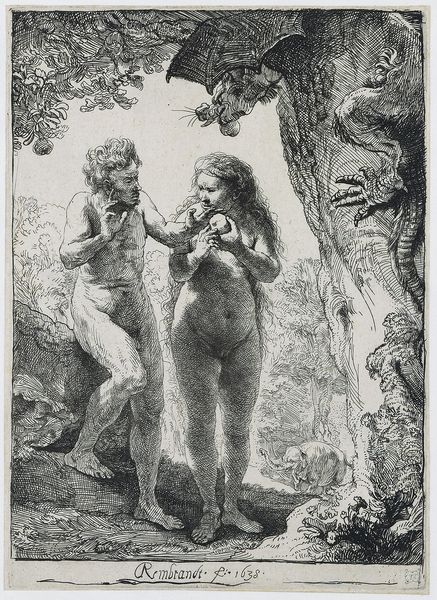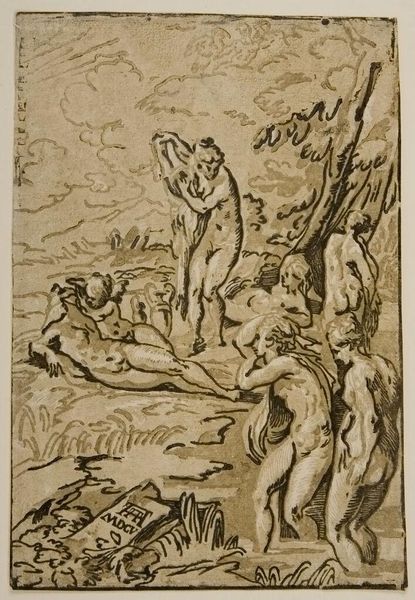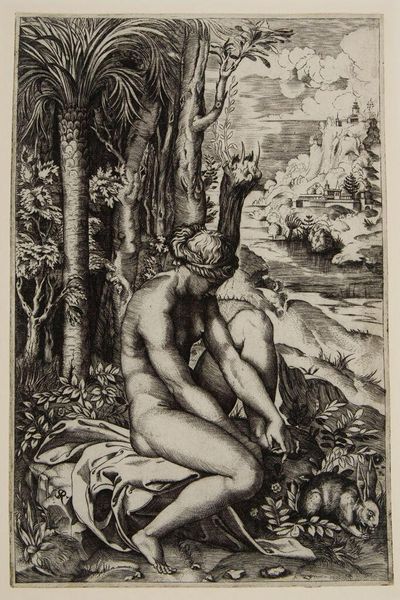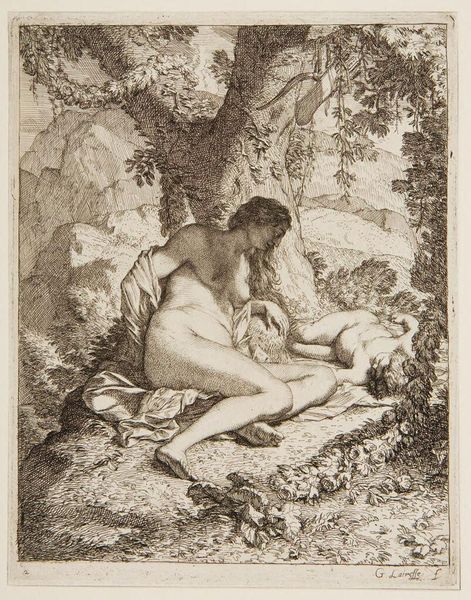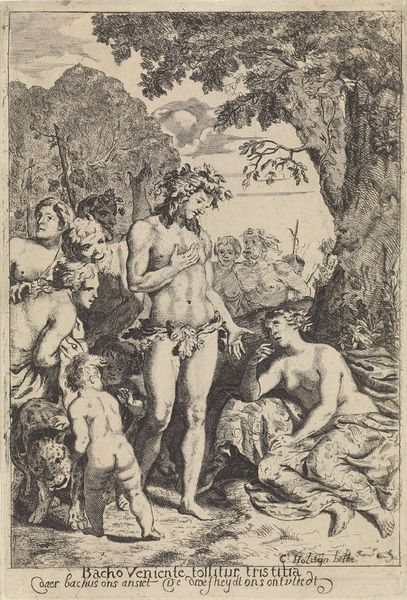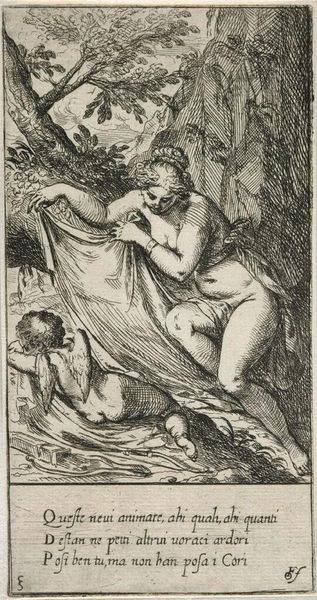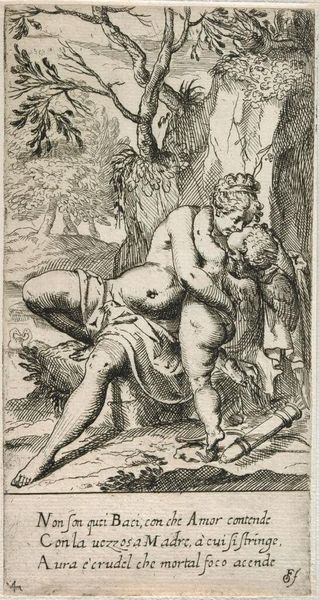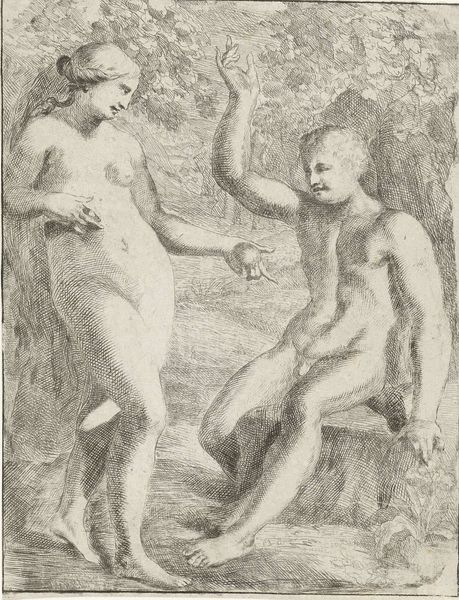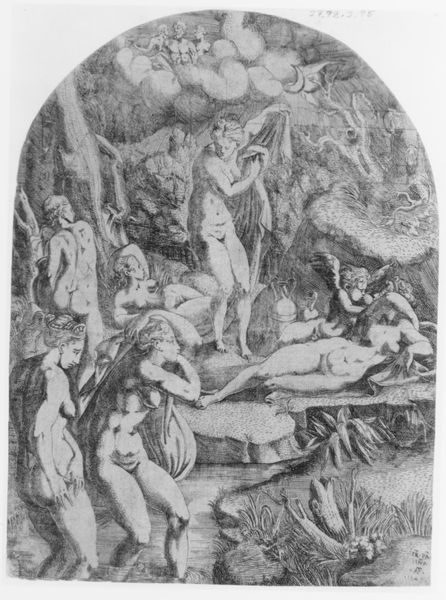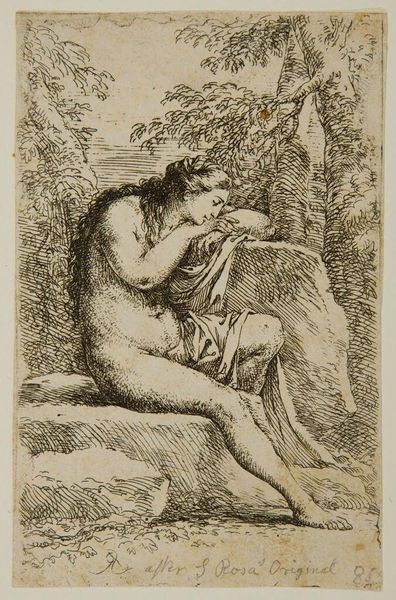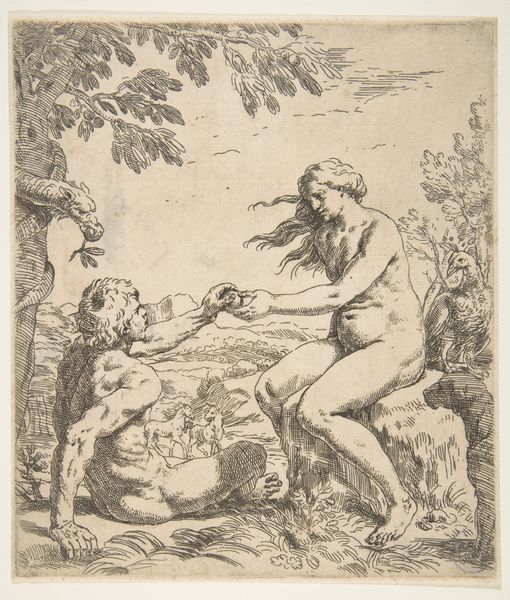
Dimensions: plate: 16.2 Ã 11.6 cm (6 3/8 Ã 4 9/16 in.)
Copyright: CC0 1.0
Curator: Gazing at Rembrandt's "Adam and Eve," I immediately feel a sense of foreboding; the heavy shading and contorted figures contribute to this oppressive atmosphere. Editor: Indeed. This etching, created by Rembrandt in 1638, invites us to consider the socio-political landscape of 17th-century Europe and how anxieties around morality, sin, and gender roles were depicted in art. Note the positioning of Eve at the center, a deliberate choice that challenges traditional patriarchal interpretations of the biblical narrative. Curator: I agree. Eve’s central placement reframes the fall as a moment of female agency, while Adam shrinks away, embodying male anxiety. Editor: And the serpent—hardly the seductive creature we expect. It's a grotesque beast, reflecting societal fears surrounding female power and the disruption of established hierarchies. Considering how art served as a tool for reinforcing cultural norms, Rembrandt's work sparks complex questions about the politics of representation. Curator: It's fascinating how Rembrandt uses the printmaking technique to amplify the narrative's psychological weight. It compels us to confront the story's enduring relevance in contemporary conversations about power, choice, and responsibility. Editor: Precisely, and studying the historical context offers a potent framework for understanding not only Rembrandt's artistic choices but also the broader implications of the story itself.
Comments
No comments
Be the first to comment and join the conversation on the ultimate creative platform.

